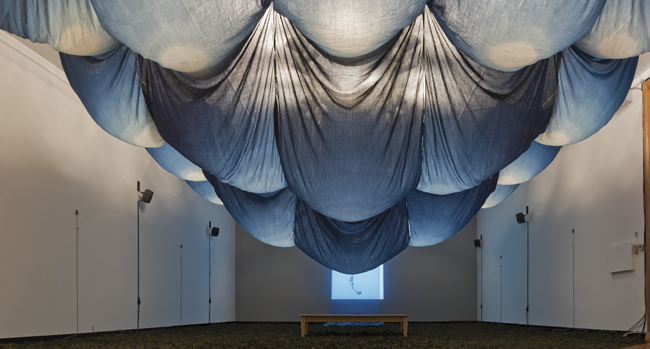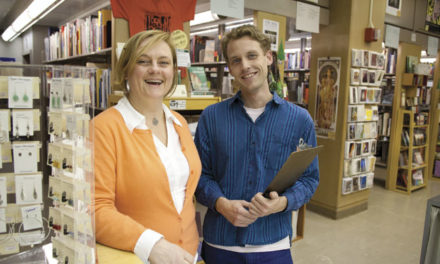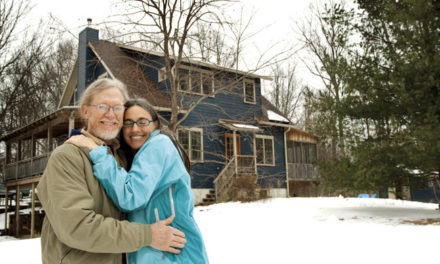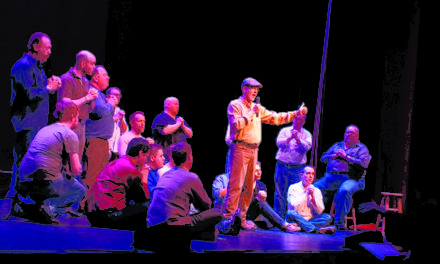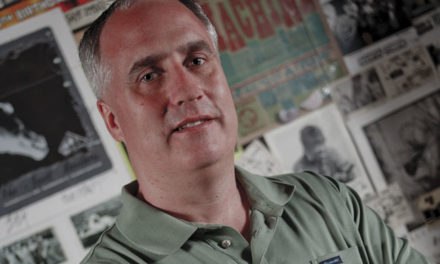BY CARMEN SIERING
He isn’t a palm reader, but textile artist Rowland Ricketts often gets a glimpse of the future by gazing at the seeds in the palm of his hand.
“I start with a handful of indigo seeds in the spring,” says Ricketts, 42, an assistant professor of textiles at Indiana University. “I don’t know what they are going to become at that point, but I’m already anticipating it.”
Ricketts, who creates his large textile compositions using age-old techniques and natural materials, recently garnered national attention when he received an unrestricted $50,000 grant from United States Artists (USA). He is the first USA Fellow from Indiana.
After graduating from Wesleyan University in Connecticut, Ricketts apprenticed in indigo farming and dyeing in Japan, where he met his wife, Chinami. Today he farms indigo and uses his dyed textiles to develop large installations, such as the one at the University of Illinois at Urbana-Champaign, titled “Fields of Indigo,” which spanned two stories.
More important than the size of the installations, Ricketts is interested in what he calls the “process of accumulation” in his works—the accumulation of shared time and energy that goes into their creation. It’s why he insists on farming indigo and creating his own dyes. And it’s why he invites others to share the experience.
Ricketts runs IndiGrowing Blue at IU, a project where volunteers grow and harvest indigo. He tried to recreate a bit of that experience in “Fields of Indigo” by covering the floors throughout the installation in indigo. Visitors winnow the indigo with every step.
“All the people who have worked with the indigo or walked on it are invested in it,” he says. “As it goes through all the various stages of becoming dye, it accumulates meaning in many ways.”
Ricketts says connecting people to the natural world, history, and new ways of seeing contemporary society can happen through his indigo projects. “Through this single plant, I’m able to access the history of the world and traditional ways of making things,” he says. “It’s a simple plant, but it’s also a point of departure for all sorts of explorations.”


